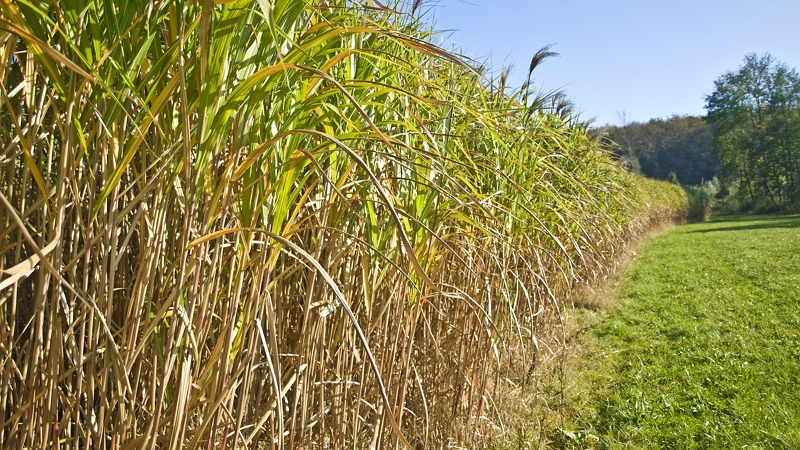Analysis of Carbon
We determine the carbon content according to the procedures outlined in European Standard EN 15104:2011 ("Solid biofuels - Determination of total content of carbon, hydrogen and nitrogen - Instrumental methods") and we use an Elementar Vario MACRO Cube elemental analyser which has been designed to satisfy the requirements of this method.
We report the carbon content on a dry-mass basis as well as on an as-received basis and a dry ash-free basis (providing that the ash content and as-received moisture content of the sample have also been determined).
Click here to place an order for determining Carbon.
Request a QuoteCarbon Content
Analysis Packages for Carbon
Volatile Matter, Fixed Carbon, Moisture, Ash, Carbon, Hydrogen, Nitrogen, Sulphur, Oxygen, Gross Calorific Value, Net Calorific Value, Chlorine, Ash Shrinkage Starting Temperature (Reducing), Ash Deformation Temperature (Reducing), Ash Hemisphere Temperature (Reducing), Ash Flow Temperature (Reducing), Aluminium, Calcium, Iron, Magnesium, Phosphorus, Potassium, Silicon, Sodium, Titanium
Total Sugars, Glucose, Xylose, Mannose, Arabinose, Galactose, Rhamnose, Lignin (Klason), Lignin (Acid Soluble), Carbon, Extractives (Ethanol-Soluble), Extractives (Water-Soluble), Extractives (Exhaustive - Water then Ethanol), Extractives (Water-Insoluble, Ethanol Soluble) , Ash, Ash (Acid Insoluble), Starch, Pectin, Glucuronic Acid, Galacturonic Acid, 4-O-Methyl-D-Glucuronic Acid
Moisture, Ash Content (815C), Carbon, Hydrogen, Nitrogen, Sulphur, Oxygen, Chlorine, Volatile Matter, Fixed Carbon, Aluminium, Calcium, Iron, Magnesium, Phosphorus, Potassium, Silicon, Sodium, Titanium, Gross Calorific Value, Net Calorific Value, Ash Shrinkage Starting Temperature (Reducing), Ash Deformation Temperature (Reducing), Ash Hemisphere Temperature (Reducing), Ash Flow Temperature (Reducing)
Thernogram - Under Nitrogen, Thermogram - Under Air, Moisture, Inherent Moisture, Ash Content (815C), Carbon, Hydrogen, Nitrogen, Sulphur, Oxygen, Organic Carbon, Inorganic Carbon, Chlorine, Volatile Matter, Fixed Carbon, Aluminium, Calcium, Iron, Magnesium, Phosphorus, Potassium, Silicon, Sodium, Titanium, Gross Calorific Value, Net Calorific Value, Ash Shrinkage Starting Temperature (Reducing), Ash Deformation Temperature (Reducing), Ash Hemisphere Temperature (Reducing), Ash Flow Temperature (Reducing)
Thernogram - Under Nitrogen, Thermogram - Under Air, Moisture, Inherent Moisture, Ash Content (815C), Carbon, Hydrogen, Nitrogen, Sulphur, Oxygen, Organic Carbon, Inorganic Carbon, Chlorine, Volatile Matter, Fixed Carbon, Specific Surface Area (Nitrogen Gas Adsorption), Calcium, Iron, Magnesium, Phosphorus, Potassium, Silicon, Sodium, Titanium, Gross Calorific Value, Net Calorific Value, Ash Shrinkage Starting Temperature (Reducing), Ash Deformation Temperature (Reducing), Ash Hemisphere Temperature (Reducing), Ash Flow Temperature (Reducing)
Analytical Procedure for Carbon
☑ Step 1: Elemental Analysis of the Sample
Equipment Used for Carbon Analysis

Elemental Analyser
A Vario MACRO cube elemental analyser is used for the quantification of the Carbon, Hydrogen, Nitrogen, and Sulphur content of samples.
The ability of using novel method of near infrared (NIR) spectra to predict the composition and higher heating value (HHV) of dry pig manure was examined. Number of pig manure solid fractions variously pre-treated samples were collected in Denmark, from different pig slurry treatment plants (using mechanical or chemical-mechanical separation) and then analysed for their energy values. These values were determined by conventional method using bomb calorimetry and also calculated based on ultimate analysis. NIR spectra method was successfully applied and reasonable R2 values were obtained for the independent prediction set for nitrogen, ash, and the HHV. NIR also showed ability for predicting which type of treatment plants the samples came from. In addition, new empirical equations, based on ultimate analyses of pig manure solids used for prediction of the HHV was established. | |
The processing of lignocellulosic materials in modern biorefineries will allow for the
production of transport fuels and platform chemicals that could replace petroleum-derived
products. However, there is a critical lack of relevant detailed compositional information
regarding feedstocks relevant to Ireland and Irish conditions. This research has involved the
collection, preparation, and the analysis, with a high level of precision and accuracy, of a
large number of biomass samples from the waste and agricultural sectors. Not all of the
waste materials analysed are considered suitable for biorefining; for example the total sugar
contents of spent mushroom composts are too low. However, the waste paper/cardboard
that is currently exported from Ireland has a chemical composition that could result in high
biorefinery yields and so could make a significant contribution to Ireland’s biofuel demands. | ||
Additional Material
We can determine the Carbon content of pyrolysis bio-oils, click here to learn more about our various methods for analysing bio-oil.
We can determine the Carbon content of seaweed, click here to learn more about our various methods for analysing seaweed.





